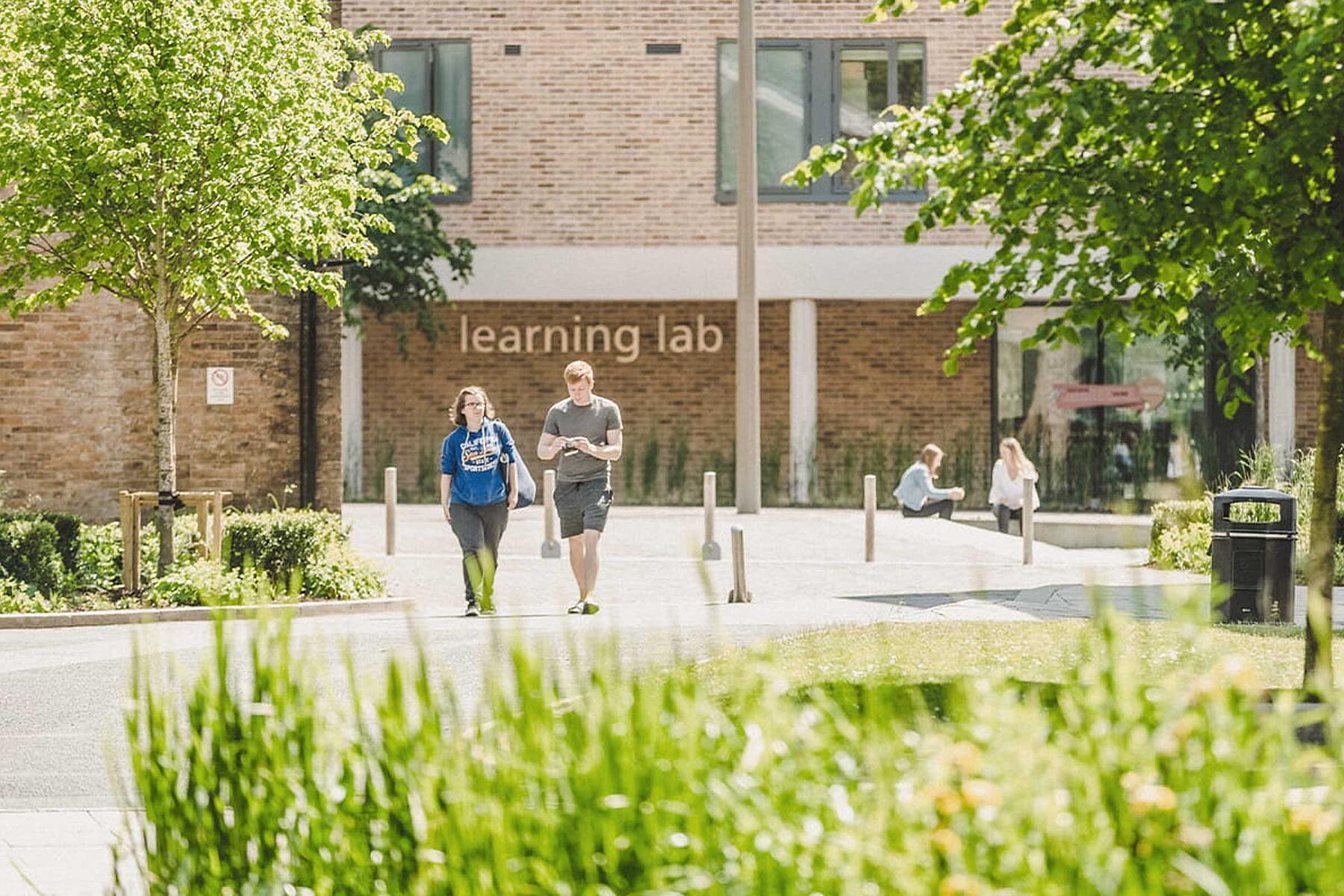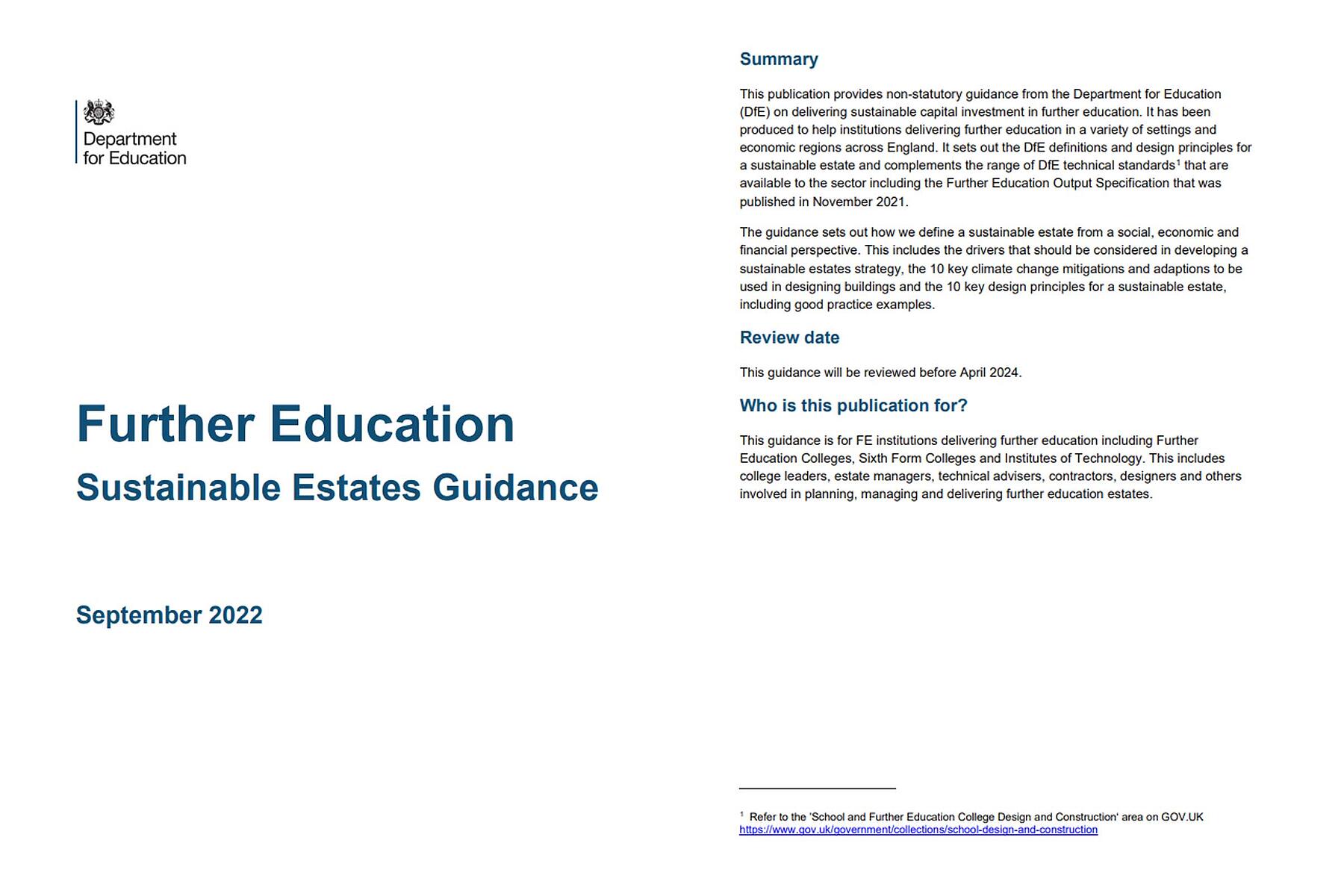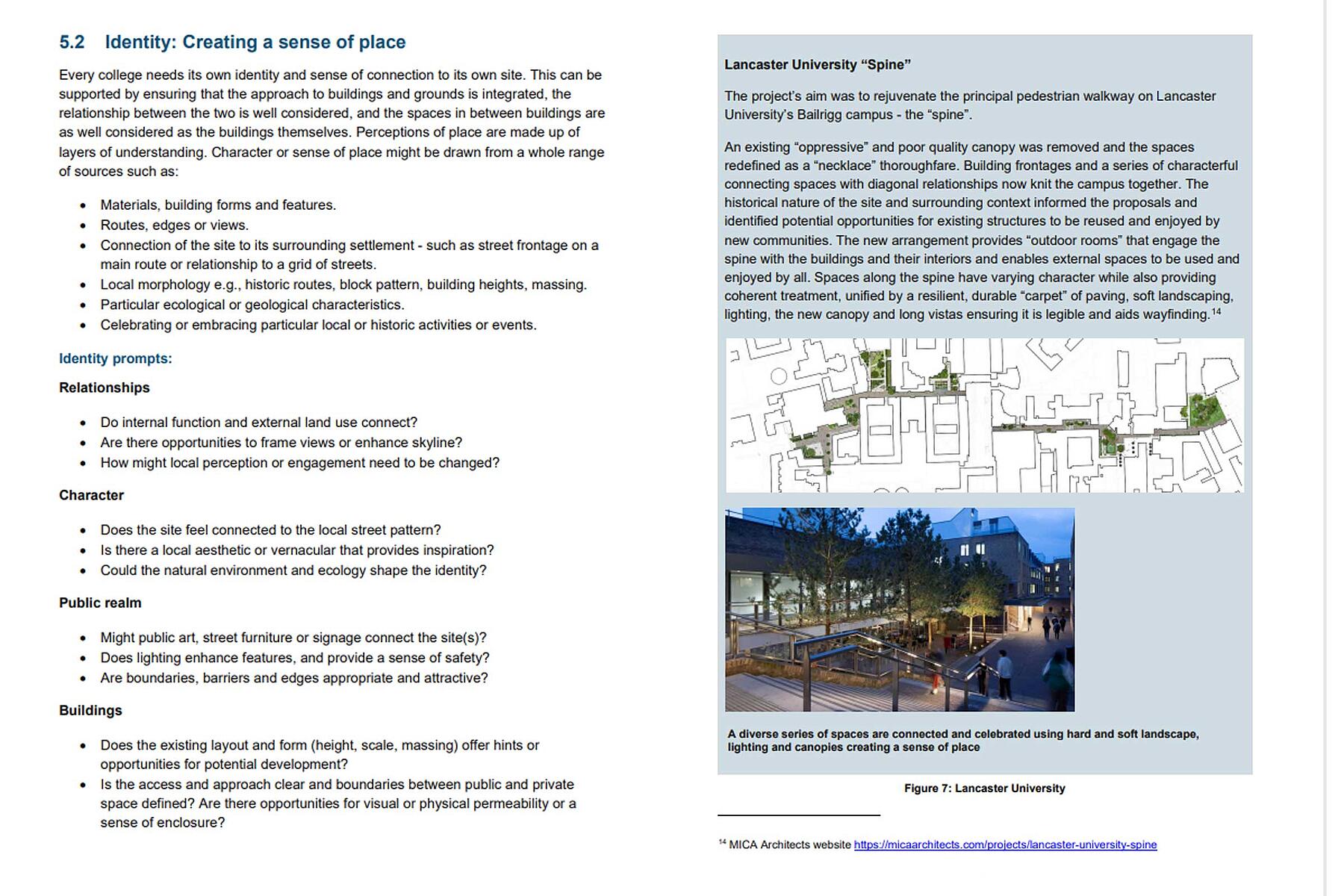Lancaster Spine features as placemaking exemplar in Department for Education publication
Lancaster Spine has been featured in a department of education report, on Sustainable Estates that was published this September, as a best practice project which demonstrates creating a sense of place.
The publication has been produced to help institutions delivering further education in a variety of settings and economic regions across England. It sets out the DfE definitions and design principles for a sustainable estate and complements the range of DfE technical standards. The guidance sets out how we define a sustainable estate from a social, economic and financial perspective. This includes the drivers that should be considered in developing a sustainable estates strategy, the 10 key climate change mitigations and adaptions to be used in designing buildings and the 10 key design principles for a sustainable estate, including good practice examples.
As mentioned above Lancaster was featured as an example of creating a sense of place. The following description outlines our work at the campus to deliver innovative results.
MICA’s work for Lancaster University involved a holistic strategy to re-define the Bailrigg campus spine, reworking building frontages and a series of characterful spaces with new diagonal relationships knitting the campus together. The arrangement provides ‘outdoor rooms’ improving connections and useability. MICA’s striking designs offer surprise and serendipity whilst providing new wayfinding. It is also a pilot scheme, the UK’s first to be considered for a BREEAM infrastructure ‘Excellent’ accreditation. Our work is a re-imagination of existing infrastructure, enhancing the environment through biodiverse planting and calibrated lighting. External spaces provide diverse habitats, external digital space, and venues for installation and performance. Live external learning environments are enabled by the project, building on the assets of the campus and bringing the 21st Century into the student experience.
We worked with the landscape architect to enhance and bring together existing ecological assets into a holistic system, and ensured that the low energy technologies and services infrastructure can be readily installed and accessed for maintenance, reducing waste and future use of resources. The work implemented has been tested against works and strategies planned for related and contiguous areas; and this ensures longevity. The work is flexible enough to ensure that it will meet a 50-year life span as a minimum.
To read more about the project click here


